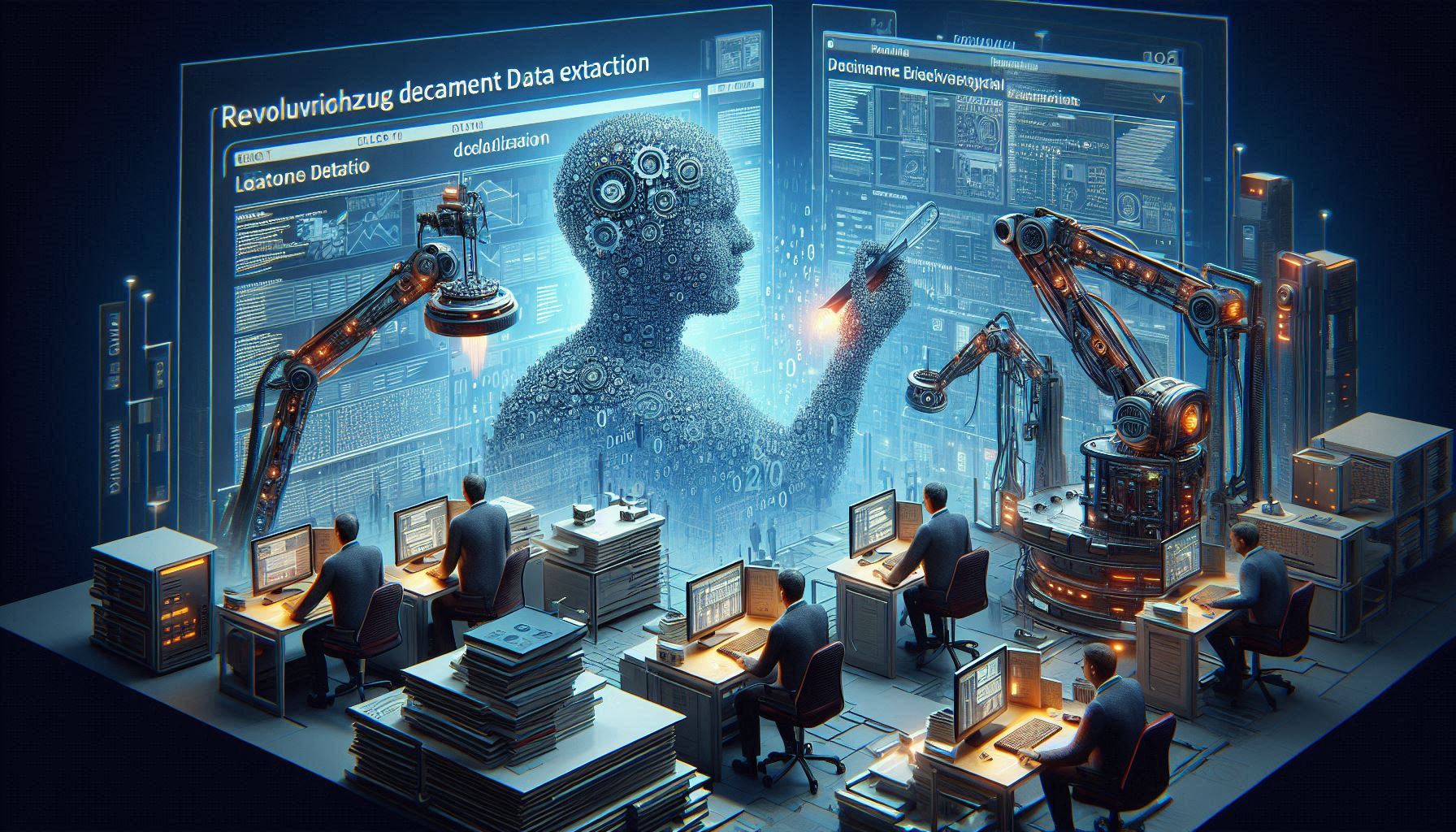Series 1/6: Revolutionizing Document Data Extraction with Large Language Models
 Pramod Gupta
Pramod Gupta
Introduction
During my master's program, I embarked on a journey to explore the intricate world of document data extraction. The challenge was clear: traditional methods were not sufficient to handle the diversity and complexity of modern documents. This research, conducted as part of my master's thesis, aimed to develop a more efficient and accurate approach using the capabilities of Large Language Models (LLMs), particularly GPT-3.5, LLama variant, Gemini pro, and vision 1.5.
My fascination with natural language processing (NLP) and artificial intelligence (AI) led me to this research topic. The goal was to address the limitations of existing extraction methods and provide a solution that could adapt to various document structures and contents with minimal manual intervention. This blog post outlines the journey and findings of my research.
Document data extraction involves the process of identifying and extracting specific information from structured documents, such as forms, invoices, receipts, and reports. This practice is crucial for automating data entry, enabling data analysis, and improving workflow efficiency in various industries including finance, healthcare, and legal services.
Examples of Use Cases:
Finance:
Invoices and Receipts: Automating the extraction of line items, amounts, dates, and vendor information from invoices and receipts can significantly reduce manual data entry errors and speed up the accounts payable process.
Tax Forms: Extracting data from tax forms such as W-2, W-8BEN, and W-9 forms to streamline tax preparation and compliance.
Healthcare:
Patient Records: Extracting patient information from medical forms and records to update electronic health record (EHR) systems efficiently.
Insurance Claims: Automating the extraction of information from insurance claims to expedite claim processing and reduce administrative overhead.
Legal Services:
Contracts and Agreements: Extracting key terms, dates, and clauses from contracts to facilitate contract management and review processes.
Court Filings: Automating the extraction of case details and filings to streamline legal research and case management.
Human Resources:
Employment Applications: Extracting candidate information from resumes and application forms to populate HR databases and applicant tracking systems.
Employee Onboarding: Automating the extraction of data from onboarding forms to expedite the setup of employee records.
Traditional Methods and Their Limitations
Traditional methods for document data extraction typically rely on rule-based systems, template matching, and Optical Character Recognition (OCR). While these methods have been widely used, they come with several limitations:
Rule-Based Systems:
Definition: These systems use predefined rules and patterns to extract data.
Limitations:
Rigidity: Rules must be explicitly defined, making the system inflexible to changes in document formats.
Maintenance: Continuous updates are required to handle new document layouts or variations, increasing maintenance costs.
Scalability: Difficult to scale across different types of documents with varying structures.
Template Matching:
Definition: Utilizes predefined templates for specific document types to locate and extract data.
Limitations:
Specificity: Templates are highly specific to document types and formats, requiring a unique template for each variation.
Labor-Intensive: Creating and maintaining a large number of templates is resource-intensive.
Error-Prone: Even minor changes in document layout can lead to extraction errors.
Optical Character Recognition (OCR):
Definition: Converts different types of documents, such as scanned paper documents or PDFs, into editable and searchable data.
Limitations:
Accuracy: OCR accuracy can be affected by document quality, such as smudges, fonts, and handwriting.
Context Understanding: OCR alone lacks the ability to understand the context and meaning of the extracted text, leading to potential misinterpretations.
The Potential of Large Language Models (LLMs)
Large Language Models (LLMs) like GPT-3.5, LLAMA, and Google BARD represent a significant advancement in the field of Natural Language Processing (NLP). These models are trained on vast amounts of data and can understand and generate human-like text, making them highly effective for various NLP tasks, including document data extraction.
Advantages of LLMs in Document Data Extraction:
Flexibility:
LLMs can handle a wide variety of document formats and types without the need for predefined rules or templates.
They can adapt to new document layouts and structures more easily than rule-based or template-based systems.
Contextual Understanding:
LLMs are capable of understanding the context and semantics of the text within documents.
This allows for more accurate extraction of information, even when the document layout changes or the text is not perfectly structured.
Scalability:
LLMs can be scaled to handle numerous document types and large volumes of data.
Their ability to generalize from large datasets allows for efficient processing across different domains and industries.
Reduced Maintenance:
Unlike rule-based systems that require constant updates, LLMs need less frequent retraining to handle new document formats.
This reduces the operational burden and maintenance costs associated with traditional methods.
Conclusion
The adoption of LLMs for document data extraction represents a transformative shift from traditional methods. By leveraging the capabilities of models like GPT-3.5, LLAMA, and Google BARD, organizations can achieve higher accuracy, flexibility, and efficiency in their data extraction processes. This technological advancement paves the way for more intelligent and automated workflows, ultimately driving better business outcomes.
Coming Up Next
Stay tuned for our next blog post where we delve deeper into the power of Large Language Models (LLMs) in data extraction:
Blog Post 2: Understanding Large Language Models: A Game Changer in Data Extraction
What are LLMs and How Do They Work?
Advantages of Using LLMs Over Traditional Extraction Methods
Introducing GPT-3.5, LLAMA, and Google BARD as Key Players in This Research
Don't miss out on how these advanced models are revolutionizing the field of document data extraction!
For a more detailed exploration of this topic, including methodologies, data sets, and further analysis, please refer to my Master's Thesis and Thesis Presentation.
LinkedIn link - https://www.linkedin.com/in/pramod-gupta-b1027361/
Subscribe to my newsletter
Read articles from Pramod Gupta directly inside your inbox. Subscribe to the newsletter, and don't miss out.
Written by

Pramod Gupta
Pramod Gupta
As a Technical Lead specializing in the financial industry, I specialize in developing cutting-edge solutions leveraging machine learning, deep learning, computer vision, and the Azure cloud. My journey with this global leader in banking and finance began in December 2021, following a successful tenure as an AI Lead Engineer at Future Generali India Life Insurance for over three years. My academic foundation includes a bachelor's degree in computer engineering and ongoing pursuit of a master's degree in machine learning and AI from Liverpool John Moores University. Complementing these, I hold multiple certifications in Python, Java, and data science, underscoring my commitment to staying at the forefront of technological advancements. Throughout my career, I've delivered impactful projects in the insurance and banking sectors, applying AI technologies such as Angular, NoSQL, and XML. Notably, I've been recognized with two CEO awards for my contributions to the IVR project and the customer retention initiative, achieving a remarkable 40% increase in response rates and 25% improvement in retention rates. Driven by a passion for solving complex challenges, I continually seek opportunities to expand my skills, embrace new tools and techniques, and collaborate effectively within diverse teams. My overarching goal is to leverage my expertise to drive innovation and create substantial value for both my organization and society at large.